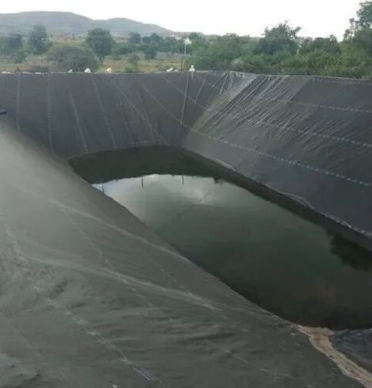- Understanding the Role of Geomembrane Liners in Waste Management
- Innovations in Geomembrane Liners for Water Management
- Geomembrane Liners: A Comprehensive Guide
- The Future of Geomembrane Liners in Civil Engineering
- Geomembrane Liners: Enhancing Landfill Stability
Manager:Alvin Wang
WhatsApp:+62 8983806051
Tel:+86 10-5797-1075
Email:steelwang@okorder.com
Address:3rd Floor, No.2 Building, No.1 Sanlihe Road
What is the life expectancy of a HDPE geomembrane?
A high-density polyethylene (HDPE) geomembrane is a kind of versatile material that is used widely in engineering and environmental applications due to its impermeability, durability and long service life. Among several other questions about using hdpe Geomembranes for different projects; What is the life expectancy of a HDPE geomembrane? In this article we will look at what factors determine how long an HDPE liner will last, test its strength under various conditions and also give tips on how to make it last longer.

Definition Of Terms
Composition and Characteristics:
A synthetic liner made from high density polyethylene which is derived from ethylene monomer units through polymerization process that happens under specific temperature conditions known as thermoplastics. Its most notable feature is its ability to create an impermeable barrier preventing liquid or gas migration hence can be used as landfill liners, pond liners among others due to their excellent chemical resistance properties coupled with mechanical strength against wear and tear over time even when exposed harsh weather environments such as mining leach pads or containment systems.
Factors Affecting Lifespan
Quality of Materials Used:
The quality level exhibited by any given type of HDPE depends on how strict standards were followed during manufacturing processes while taking into account things like resin quality addition formulation among other things so as to ensure overall robustness vis-a-vis different elements needed). Hence those which meet more demanding requirements often survive much longer than their low-end counterparts because they are built tough enough withstand many adverse events without breaking down easily thus reducing replacement frequency rate significantly thereby increasing lifespan;
Installation Methods:
Installing an HDPE geomembrane properly plays huge role towards maximizing its life span. This could involve activities ranging from surface preparation all through seam integrity assurance up until adequate anchorage methods are employed coupled with proper slope design required for most effective resistance against environmental stressors over time. If these are not adhered to then premature failure might occur leading too shorter life expectancy;
Environmental Setting:
The environment within which a high density polythene liner is located greatly affects how long it will last. Soil type, temperature fluctuations, levels of mechanical loading among others act as either catalysts or suppressants to degradation processes that may lead to liner wearing out before time. Failure by designers this impact into account during their planning stage can result in installations failing altogether due environmental factors thus necessitating for more appropriate choices based on specific sites where such materials should be used like chemical plants near rivers.
Strength and Resistance
Chemical Resistance:
HDPE materials have been found resistant against wide range chemicals including acids bases organic solvents etcetera; This feature makes them ideal candidates for lining tanks containing corrosive substances or even wastewater treatment plants where hazardous wastes need containment measures put place until they are treated properly. Therefore if exposed directly with any form reactant capable causing corrosion reactions opt chemically inert option like use geosynthetic clay liners (GCLs) instead since they won’t react at all hence exhibiting highest level durability possible in environment filled many aggressive agents;
Mechanical Properties:
HDPE liners possess good tensile strength which allows them resist being torn apart by external forces such as those exerted heavy machinery moving loads over topsoil without puncturing through it thereby maintaining their performance integrity even under harsh conditions like mining activities involving movement large volumes waste rock material from one place another;
UV Stability:
Being continuously subjected to intense sunlight may cause HDPE membranes lose some part its original physical properties especially when no protection measures were taken into consideration during installation stages where necessary covering systems should have been included within design so that they protect against harmful effects emanating from excessive exposure UV rays coming down earth’s atmosphere otherwise prolonged periods under direct sunlight would lead degradation leading reduced lifespan;

Conclusion
To sum up, the lifespan of a HDPE geomembrane differs due to quality of material, process of installation, environmental conditions as well as specific needs for application. The selection of good materials, following right steps when installing them, taking into account particular site-related environmental aspects and using suitable maintenance methods are among what can be done by engineers and managers so that they may increase the life span and performance of HDPE liners. If cared for properly it will hold up as a reliable containment for many years which could be used in protecting our surroundings also this makes it cheap over time thus being sustainable enough for various engineering works involving environment.
-
2024-12-05Geomembrane Liners: A Comprehensive Guide






